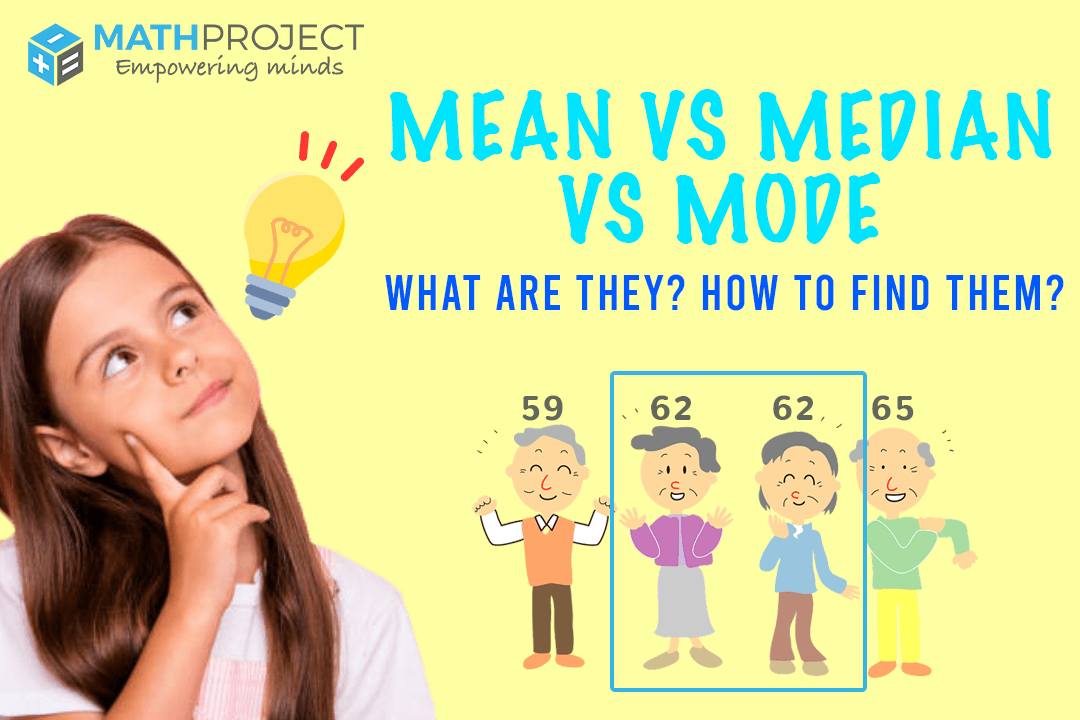No products in the cart.
Math Tips, Resources, Study Skills
Mean, Median, Mode
Children are usually taught to calculate mean in math at ages 10 to 11, and range, mode, and median at ages 11 to 14. However, with the growing emphasis on learning data analysis and probability, children may be exposed to these math concepts at an early age. So, what exactly are mean, median and mode? And how do we calculate them?
Mean in Math
The mean in math, also called the “arithmetic mean”, is the average of a set of numbers. To find the mean, first add up all the numbers in the data set (collection of the numbers or values). Then, divide by the total amount of the numbers (data points).
Example 1
For example, to find the mean of the following 5 numbers: 6, 4, 4, 9, 7
We will first add all the numbers together, and get a sum of 30.
Then, we will divide the sum by 5 since there are five numbers in total.
The mean or average of the data points would be 6.
Since mean takes all the data values into account, every data value contributes to the total sum. If you change any of the numbers in the data set, you also change the mean. This can be a disadvantage because the mean is sensitive to outliers (any values that are far from other data points in the data set). Take the previous example, and include two other numbers 19 and 21 to the set. The sum of the new data set would be 70, and the new mean would be 10. However, the new mean does not represent a “typical” data point as it is bigger than 70% of the numbers in the group. So, it is misleading to report the mean as if it represents the overall data set.
Median in Math
The median is the middle number of the data set, when the numbers are arranged from least to greatest (that is, in numerical order).
To arrange the numbers in Example 1:
Original Set: 6, 4, 4, 9, 7 → After Rearrangement: 4, 4, 6, 7, 9
The media of the data set would be 6 as it is the middle number.
If there are two numbers in the middle (that is, if the data set has an even amount of numbers), the median would be the average of the two numbers.
What about the outliers? If we replace the number 9 with 100 in the previous data set, the median does not change. Same result happens if we replace the number 4 with a smaller number. Unlike the mean in math, the median is “resistant to outliers”. The median is a better choice to represent a group of data when the data set contains values that are extremely large or small when compared to the rest of the group.
Mode in Math
The mode is the number that appears most often in a data set. A tip to find the mode is to keep numbers in order from smallest to largest. This helps avoid the chance of missing anything. In Example 1, the mode would be 4 because it appeared twice while all other numbers only appeared once.
There can be more than one number that appears just as often. If that happens, you would report more than one mode for the data set. It is also possible for a data set to have no mode, if the numbers all appear with the same frequency.
The mode is useful in situations when you need to know what is the most common. For example, if you want to know which size of the shirts to keep in stock in your clothing store, the mode would tell you the most popular size. It would not do you any good to average the sizes or find the median in this case, but the mode could be useful.
Are you looking for other math resources to strengthen your child’s understanding about the mean, median and mode? Check out MathProject’s latest data analysis book to help your child consolidate and broaden their math skills!
Check out what other parents have to say about us, here!
To know more about MathProject’s K-12 math programs, or to book a free assessment, contact us today at 1-844-628-4243.
Book a free assessment
Citations:
Mean, Median, Mode and Range – https://www.twinkl.ca/
A Crash Course on Mean, Median, and Mode – https://magoosh.com/
Data Set in Math: Definition & Examples – https://study.com/
5 Ways to Find Outliers in Your Data – https://statisticsbyjim.com/

